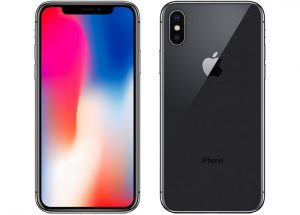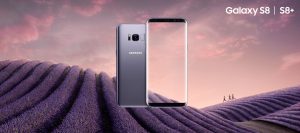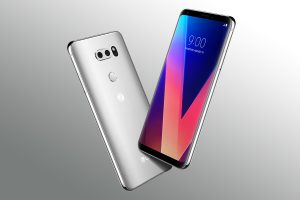Smartphones around the world feature different display technology, and, individual people have their own interest in the display technology. Ex, the most commonly used display technology are TFT, which are mainly used in a low-cost smartphone (Samsung uses them on their low-cost devices). The most used display technology is IPS LCD screen, which is a cheaper to produce and offers better viewing angle and display colour reproduction. So, in the 90% of the smartphones, one can see this technology, in fact, except the iPhone X, all the previous iPhones were using IPS LCD screen (brand name retina display). Finally, the OLED screen, the best display technology, which is very hard to produce.
Even the Apple, the pinnacle of smartphone satire has gone with the OLED technology for their latest and greatest iPhone X and here are the reasons for the same. The Black will be pitch black, colours will pop out with more dynamic range and not forget the fact that, they are efficient when it comes to the battery utilisation. So, here are the top premium smartphones that offer OLED technology (Super AMOLED and POLED).
The Apple iPhone X is the first iPhone from the brand to feature the display with the OLED technology. The device offers a 5.8-inch edge-to-edge display with a notch on the top, which houses all the necessary sensors like front-facing selfie camera and Face ID. The device is IP67 certified against the water and dust resistance.
With respect to the tech specifications, the device is powered by Apple’s own A11 Bionic chipset with 3 GB RAM and 64 GB or 256 GB storage. The iPhone X packs dual rear-facing cameras with dual OIS which offers 4K video recording up to 60 frames per second and 1080p slow motion video up to 240 frames per second. The smartphone is priced at INR 89,000 in India and the same retails for INR 65,000 in the USA ($999). The iPhone X offers fast charging and wireless charging as well.
Samsung Galaxy Note 8 offers same Super AMOLED display with 6.3-inch screen size with Corning Gorilla Glass 5 on the top. The display offers edges around the corner, making it one of kind smartphone. In terms of tech specifications, the Galaxy Note 8 is powered by Qualcomm Snapdragon 835 Octa-core SoC, paired with either 6 GB or 8 GB RAM with 64 GB onboard flash storage with a dedicated micro SD card slot (up to 256 GB). The device is IP68 certified for water and dust resistance.
In terms of camera capability, the device offers dual 12 MP camera modules with dual OIS that offers live bokeh effect and 4K video recording capability up to 30 frames per second with 1080p slow motion video as well. The device also offers fast charging and wireless charging capability. The device is priced at $950 and in India, the device retails for INR 67,000 only.
The Samsung Galaxy S8 and S8+ don’t have many changes over the Galaxy Note 8. However, these devices offer smaller footprints. Under the hood, these smartphones are powered by the same Qualcomm Snapdragon 835 Octa-core SoC paired with either 4 GB or 6 GB onboard flash storage with a dedicated micro SD card slot (up to 256 GB).
Coming to the camera capability, the device offers a single 12 MP shooter with OIS and F/1.7 aperture offering fantastic low light photography and 4k video recording capability out of the box. The wireless charging, fast charging, and the IP68 rating remain the same. These devices retail in India from anywhere between INR 45,000 to INR 60,000 depending on the model.![]()
Google Pixel 2 and Pixel 2 XL:
Google Pixel 2 offers a 5.0-inch POLED panel and Google Pixel 2 XL offers a 6.0-inch POLED display manufactured by LG. The Pixel 2 XL shines in the new 18:9 aspect ratio and the Google Pixel 2 offers a standard 16:9 aspect ration like most of the smartphones. These devices are powered by Qualcomm Snapdragon 835 Octa-core SoC, paired with 4 GB LPDDR4x RAM and 64 GB or 128 GB onboard flash storage without any micro SD card slot.
In terms of camera capability, the device offers a single 12 MP camera with 4K video recording capability with a software-enabled portrait mode. These devices are powered by latest Android Oreo 8.0 with the stock user interface and this will be the first smartphone to receive future Android updates for the next two years.
The LG V30, the latest offering from the company. The device is fitted with a QHD+ POLED display with a Corning Gorilla Glass 5 protection on the top. Under the hood, the device is powered by the same Qualcomm Snapdragon 835 SoC, that powers the Samsung Galaxy Note 8, paired with 4 GB LPDDR4x RAM and 64 GB onboard flash storage with a dedicated micro SD card slot (up to 2 TB). The device is certified for IP68 and MIL-STD 810G certified for water and dust resistance as well.
Unlike other two devices, the device offers wireless charging and fast charging. In terms of camera capability, the device offers a dual rear-camera solution with 16 MP and a 13 MP solution with a F/1.6 aperture with 4k video recording capability up to 30 frames per second. However, the device is not yet available in India.
The Huawei Mate 10 Pro is the latest entry into the OLED technology and probably, this is the low-resolution display. The Mate 10 Pro offers FHD+ OLED display with 2.5D curved tempered glass on the top. The smartphone is powered by Huawei’s own Kirin 970 Octa-core SoC with 4 GB LPDDR4x RAM and 64 GB onboard flash storage with a dedicated micro SD card slot (up to 256 GB).
Coming to the camera department, the device offers a dual rear-facing camera with 20 MP primary camera and a secondary camera with F/1.6 aperture and a 4K video recording capability. On the front, the device offers an 8 MP front-facing selfie camera with 1080p video recording capability.
These are the some of the best smartphones available in the market with powerful specifications and the common factor between then is OLED display.

